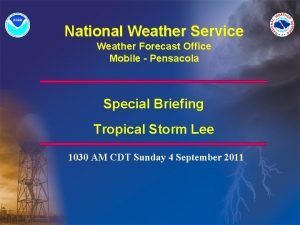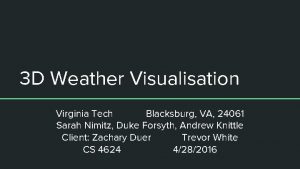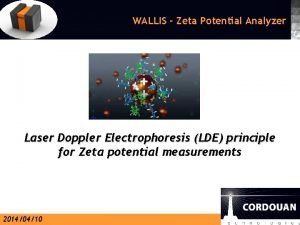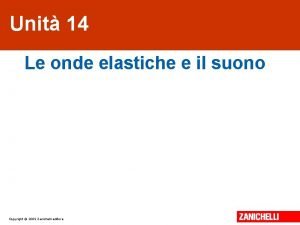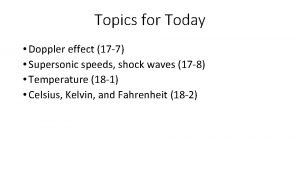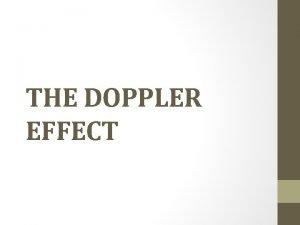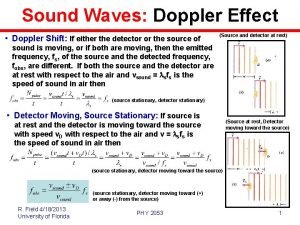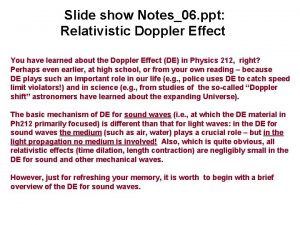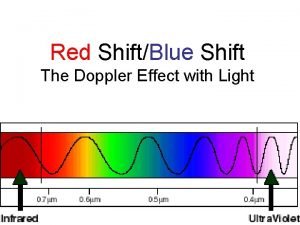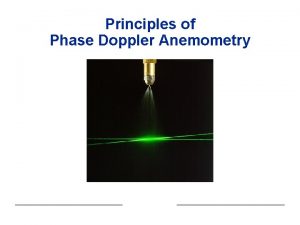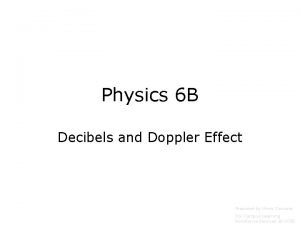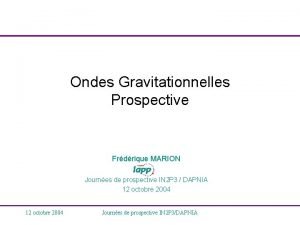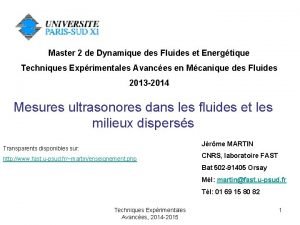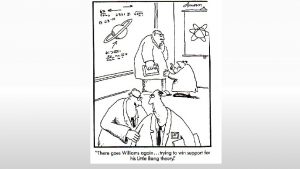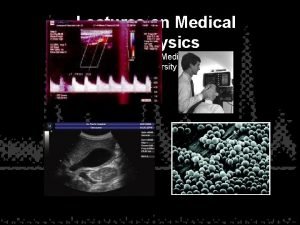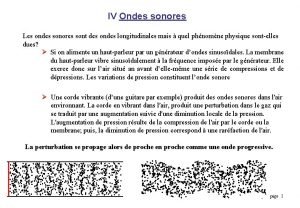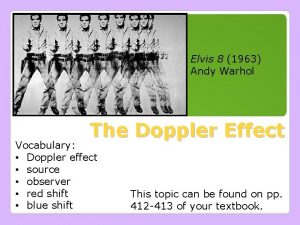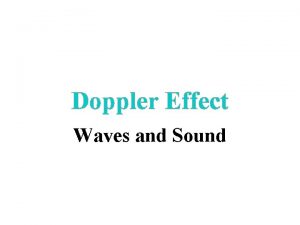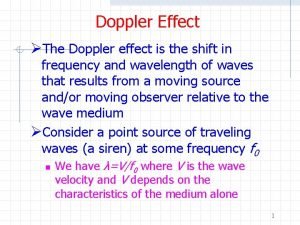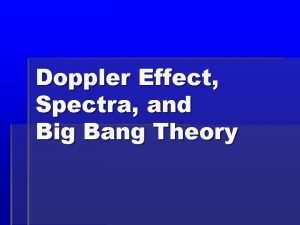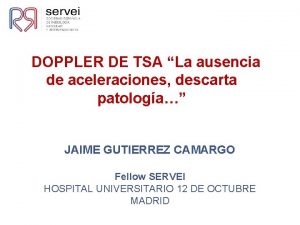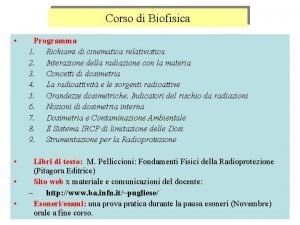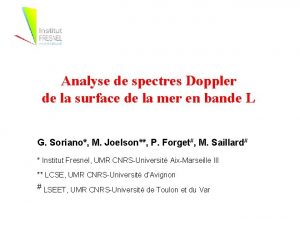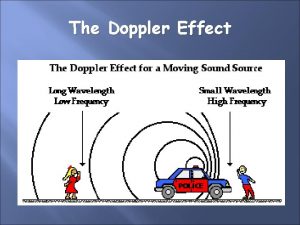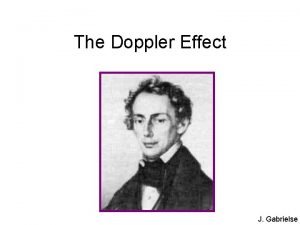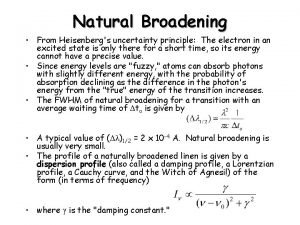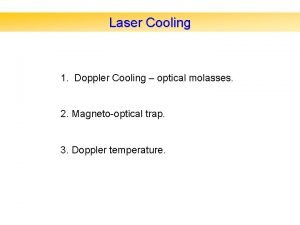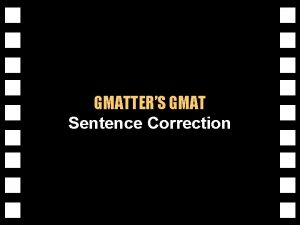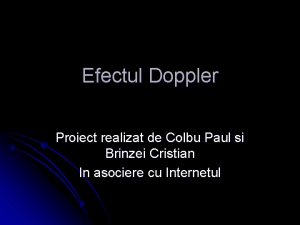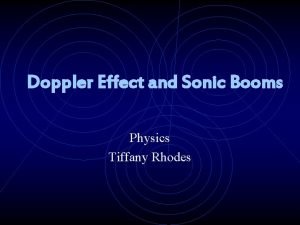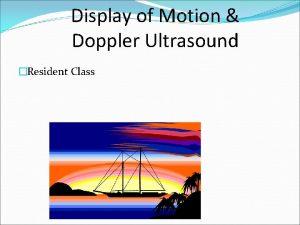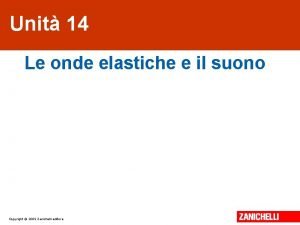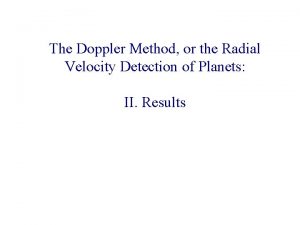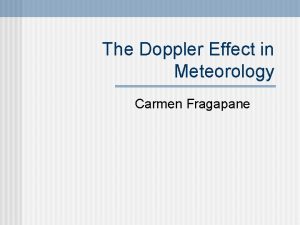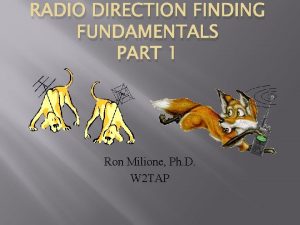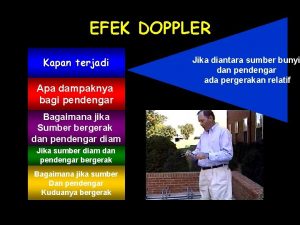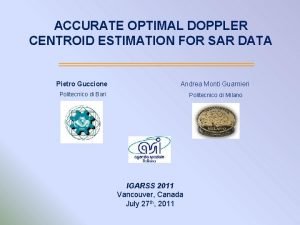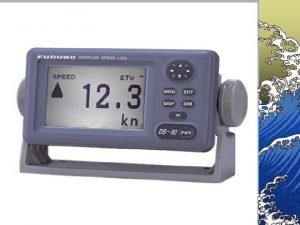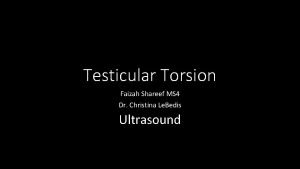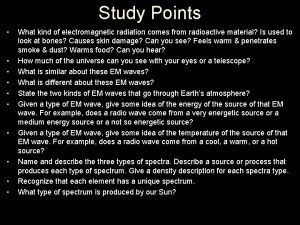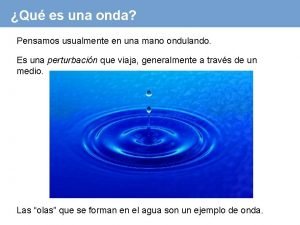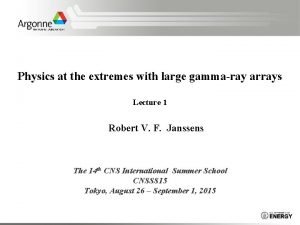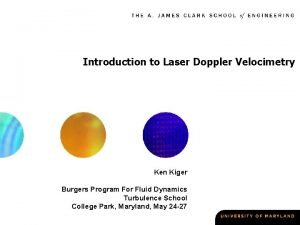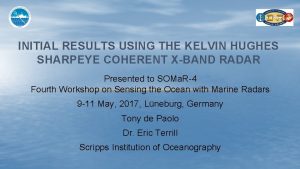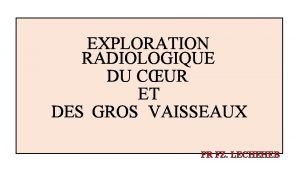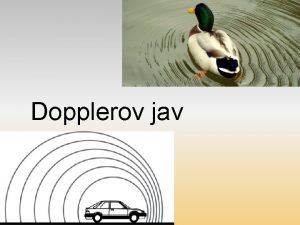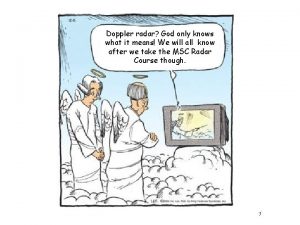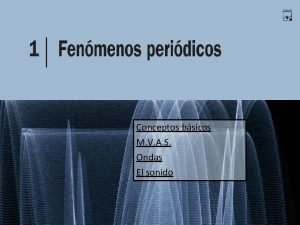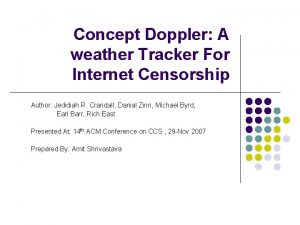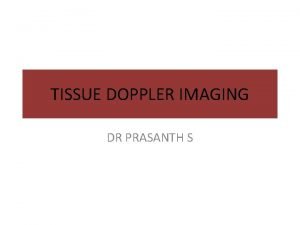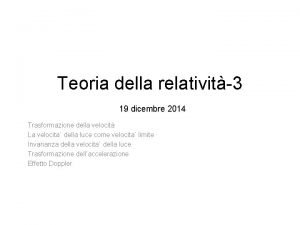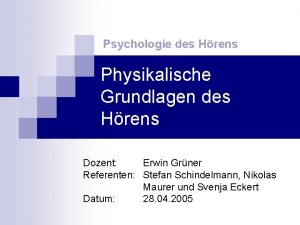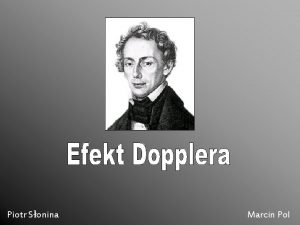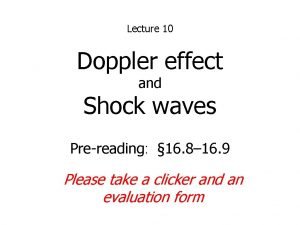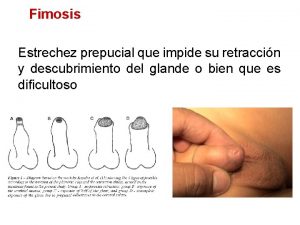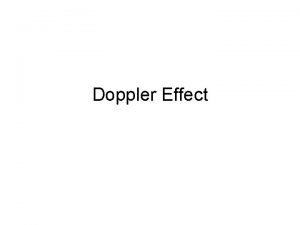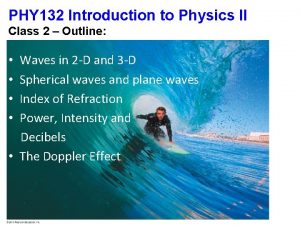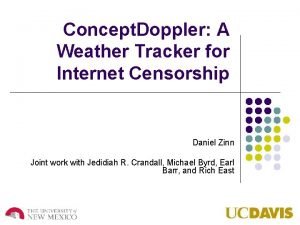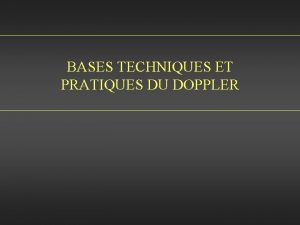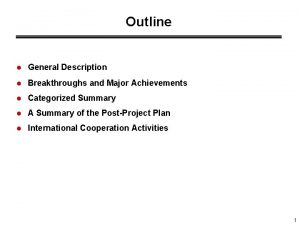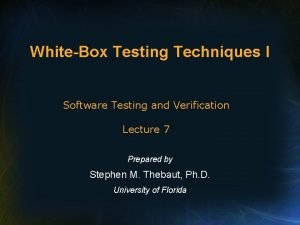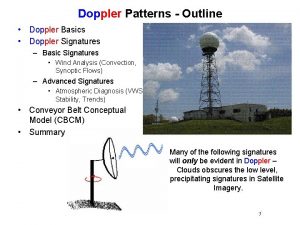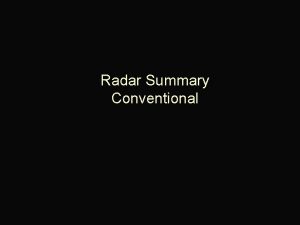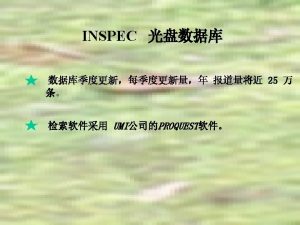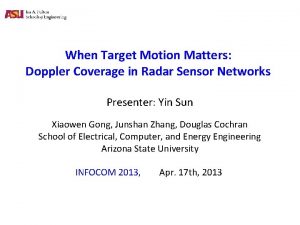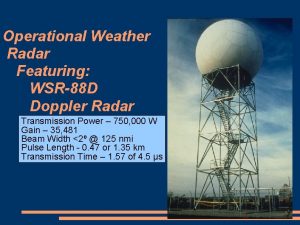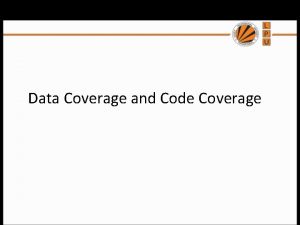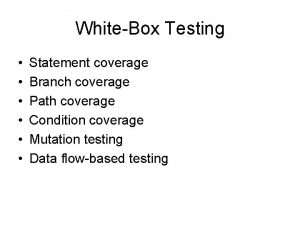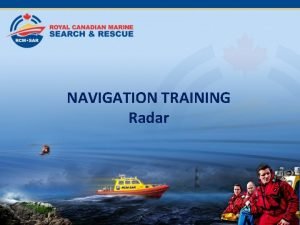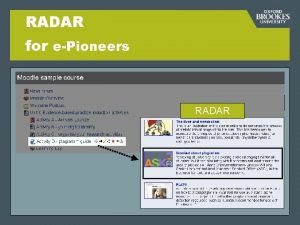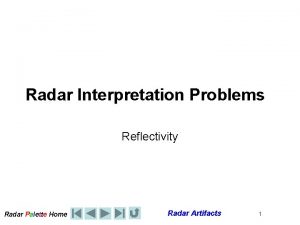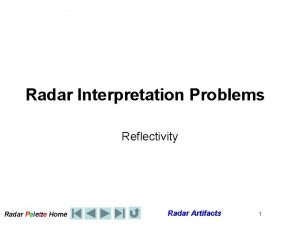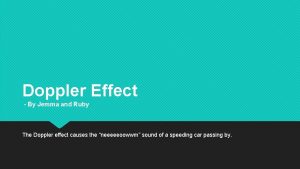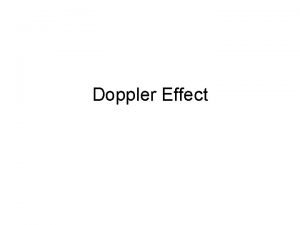Radar Summary Doppler Outline C Radar Coverage in





















































































- Slides: 85

Radar Summary Doppler

Outline C Radar Coverage in Canada C Basic Interpretation C Conventional Radar C Doppler Radar C Severe Weather Signatures on Radar C New Radar Techniques… C Verification C Wrap-up

The Doppler effect n n As opposed to the Dopeler Effect As opposed to Dropler Radar Classically, the Doppler effect is a frequency shift The change in frequency of a signal returned from a target owing to its radial motion relative to an observer With radar, this is measured as a shift in phase between the transmitted pulse and the backscattered microwave radiation Average radial velocity of the target is calculated from this phase shift

The Radar Waveform

Velocity Spectrum Stationary GC WX WX Moves -VN 0 +VN

Phase Shift Ambiguity A shift of ¼ wavelength is ambiguous. You don’t know if your are coming or going?

Velocity folding – Phase Shift Ambiguity Target radial velocities producing phase shifts greater than one-half wavelength (or p radians) results in velocity folding n Maximum unambiguous radial velocity Vmax (Nyquist velocity) = n (PRF X Wavelength) / 4 n This range is not adequate to describe all horizontal velocities n Nyquist velocity=1200 X 5 cm/4 = 1500 cm/sec=15 m/s=30 knots Is a Nyquist velocity of 30 knots enough?

The velocities with this storm are HUGE !!!! Quick, increase the PRF and give me a sector scan on the storm cell ! Vmax (Nyquist velocity) = (PRF X Wavelength) / 4 By increasing the PRF, velocity foldng starts at a higher radial velocity

Folded Doppler quickly reaches the maximum colour range and cycles to opposite colours = noisy, complicated fields Interpretation is challenging! Helen was right! ? ? After PRF increased Before Helen’s Demand

Doppler Dilemma n Maximum unambiguous range: n Rmax = c / 2 PRF n What is this for PRF = 1200 ? 125 km Vmax. Rmax = cl/8 n Vmax and Rmax are inversely proportional to each other, but we want to maximize both n That’s the Doppler dilemma n

How can we increase Vmax ?

Velocity Unfolding n Use two PRF’s and take the difference in the Doppler velocities ! n The difference turns out to be a unique function of the actual velocity out to much higher velocities!! n So DV and one of the velocity measurements can be used to unambiguously calculate the actual radial velocity, perhaps up to 48 m/s (almost 100 knots).

Whoa. Now that’s fast!!

Dual PRF Unfolding

Now we can see the whole storm, Bill ! That’s great, Jo. Now if only Dorothy and pigs would fly !

Example: Radial Velocity Product with Vr to 48 m/s N-S Warm Front? WLY upper level winds SELY low level winds Katabatic Cold Front?

Doppler Patterns

Doppler wind interpretation You can determine wind direction vs. height away from radar in two different directions • Go out along zero line • Draw line back to radar • Wind is perpendicular to this line, towards the red echoes

Doppler wind interpretation For any height you can attempt to determine the wind in 4 locations • Determine the two zero line winds • Look roughly 90° away for the max wind, which should be all directed along a radial In this way you can see areas of non-uniform flow • confluence, diffluence

Doppler Uniform 30 m/s wind everywhere

Doppler Display - Uniform Wind Shear Vertical Wind Shear of 13 knots per kilometre = Speed Shear only

Doppler with Directional Shear and Jet Directional Shear and Wind Maximum 20 20

Doppler with Wind Shear - Speed and Directional Direction veering with height Speed increasing with height

The Doppler Vortex

Doppler Practice Westerly Winds with only Speed shear

Doppler Practice Westerly Winds with Low Level Jet

Doppler Practice Veering Winds with no Speed shear

Doppler Practice Backing Winds with no Speed shear

Doppler Practice Low Level Veering under High Level Backing Winds - no Speed shear

Doppler Practice Wind shift line

Doppler Practice Large Scale Convergence

Doppler Practice Radar Site Divergence

Doppler Practice Radar Site Westerly Winds with only Speed shear

Doppler Practice SWLY NNELY LLJ QS Horizontal LLJ Marginal winds Backing with Height - Cold Air Advection Maybe a Cold Conveyor Belt ahead of a synoptic system…

Doppler Displays

Velocity Azimuth Display - VAD Doppler radial velocity data used to construct a wind profile in the vertical n Direction, speed (m/s) and reflectivity (d. BZ) displayed as a function of height (km) n Note: Velocity scale is fixed in range 0 -20 m/s ( i. e. most of the unfolded velocities are not used ) n

Velocity Azimuth Display - VAD n n n At a given height (h), then the radial velocity is: For a uniform flow field and assume Vw (Vertical Velocity) approximately = 0 then Best fit of a sine curve to the observations around the circle.

Velocity Azimuth Display - VAD n n Accuracy of VAD decreases with elevation angle and height. The desired horizontal wind component becomes a smaller part of the radial wind component actually measure. Errors in the radial component has a bigger impact on the accuracy of the horizontal wind

VAD Example

A new Velocity Azimuth Display LOLAA sees winds far from radar 3. 5° scan sees winds closer in to radar – behaves most like a “profiler”

Doppler Spectra Width n n Spread of the Doppler Power Spectrum the spread, range of terminal fall speeds of the scatterers (more pronounced for rain than for snow) spectra for rain spectra for snow n n n turbulence of the air (upper levels in severe convection) vertical wind shear (e. g. , along a gust front) antenna motion

Doppler Image Characteristics Small Spectral Width Large Spectral Width

Spectral Width and “Doppler Display Texture” Rain Texture Snow Texture

Filtering using Doppler and Processing

Second Trip Echo – Extending the Range of the Doppler Scan Random Phase Processing extends the Doppler Range Dual PRF’s extends the Nyquist Velocity

Second Trip Echoes

Second Trip Echo The velocity signatures of second trip echoes are very noisy. These still contribute to the reflectivity signal where they should not.

Second Trip Processing

Second Trip Processing Doppler Reflectivity with Conventional CAPPI Doppler Reflectivity Processed Second Trip Echoes Doppler Reflectivity with Second Trip Echoes

Long Range Z 51

Long Range Radial Velocity 52

Doppler Wind Shifts B A The angle of viewing is very important and determines what one sees!

Operational Applications

Doppler Wind Shift

Doppler Wind Shift 30 minutes later Cold Front

Rain rate vs. Snow rate n Radar equation for precipitation power returned refractive index factor targets radar constant n range reflectivity factor K 2 is 0. 93 for water and 0. 197 for ice

Rain rate vs. Snow rate n Reflectivity Z is empirically related to rain rate R in the form : Z = a. R n In b Canada we use Marshall-Palmer (stratiform rain) : 1. 6 Z = 200 R But these are not n U. S. NEXRAD : valid in all situations 1. 4 Z = 300 R

Rain Rate vs Snow Rate Snow being depicted using the Rain Z-R Relationship Snow depicted using the Snow Z-R Relationship Normal CAPPI height is 1. 5 km - precipitation intensities are given in a mm/hr scale Cold season (snow expected) CAPPI height is lowered to 1. 0 km better look at low level features that are significant in winter storms and may be missed at 1. 5 k

Bird Migration and Radar

Radar Detection of a Lake Breeze

“Clear” Air Radar Returns

“Clear” Air Radar Returns and Lake Breeze

“Clear” Air Thunderstorm Outflow Gust

Anomalous Propagation of the Radar Beam Only Real Weather AP and Real Weather The Doppler Velocity View

Severe Weather Signatures on Radar

Radar Observation of Hail or Very Heavy Precipitation The spikes signature is associated with hail or heavy rain. It results from the radar beam being reflected from the hail or rain in the thunderstorm, then reflecting from the surface then back to the thunderstorm and then back to the radar… a longer path. . .

”Hail spikes" from the Carvel Radar near Edmonton

Hail Spikes & Side Lobe MAXR Echo Top

Hail Hazards Map


1. 3 km 4 km 0. 5 Doppler Velocity 1. 5 Doppler Velocity Rotating Downbursts on Descent Cyclonic rotation 11 km 3. 5 Doppler Velocity



A December Squall Line with Rear Inflow Jet

Severe Thunderstorm Processes



3. 5 Degree Doppler Close-up View 0. 5 Degree PPI Reflectivity Display 0. 5 Degree PPI Doppler Velocity Mesocyclone on Reflectivity Display 3. 5 Degree PPI Doppler Velocity

Doppler Reflectivity and Velocity Why are these away portions of the mesocyclone stronger? Shouldn’t the rotational speed be the same in a mesocyclone? Supercells approaching the radar… Opposite is true for supercell moving away from the radar…

0. 5 and 3. 5 Degree PPI Doppler

New Radar Techniques E Bistatic Radar… multiple antennas for radiating and reception to get two components of the wind… needs GPS

Bistatic Doppler Radar Real Wind X Radar B Radar A GPS …. Radar A and Radar B location GPS …. Point X location Solve for the Real wind knowing the geometry and the Radar A and Radar B radial components. .

Wrap-up C Radar Coverage in Canada C Basic Interpretation C Doppler Radar C Severe Weather Signatures on Radar C New Radar Techniques… C Wrap-up


Let’s Recap. . . Radar Coverage in Canada Basic Interpretation Conventional Radar Doppler Radar Severe Weather Signatures on Radar New Radar Techniques… Verification Wrap-up Questions?
 Limitations of mti radar
Limitations of mti radar Pulse doppler radar vs mti
Pulse doppler radar vs mti Doppler radar was introduced in_______.
Doppler radar was introduced in_______. National weather service pensacola
National weather service pensacola Va tech weather
Va tech weather Quote sandwich example
Quote sandwich example Laser doppler electrophoresis
Laser doppler electrophoresis Onde trasversali e longitudinali
Onde trasversali e longitudinali Doppler effect
Doppler effect Doppler effect when to add or subtract
Doppler effect when to add or subtract Doppler effect
Doppler effect Relativistic doppler effect ppt
Relativistic doppler effect ppt Redshifted
Redshifted Light scattering
Light scattering Decibel equation
Decibel equation Effet doppler
Effet doppler Effet doppler
Effet doppler Doppler effect
Doppler effect Duplex doppler ultrasound
Duplex doppler ultrasound Effet doppler
Effet doppler Carotid doppler velocity chart
Carotid doppler velocity chart Efeito doppler
Efeito doppler Doppler effect
Doppler effect Analise as afirmações abaixo
Analise as afirmações abaixo Doppler effect formula
Doppler effect formula Doppler effect in light
Doppler effect in light What is the red shift in the big bang theory
What is the red shift in the big bang theory Doppler tsa
Doppler tsa Effetto doppler formule inverse
Effetto doppler formule inverse Analyse af doppler
Analyse af doppler Doppler effect
Doppler effect Whats happening in this picture
Whats happening in this picture Doppler effect bbc bitesize
Doppler effect bbc bitesize Doppler broadening
Doppler broadening Magneto optical trap
Magneto optical trap Some bat caves like honeybee hives
Some bat caves like honeybee hives Angolo di insonazione doppler
Angolo di insonazione doppler Aplicatii ale efectului doppler
Aplicatii ale efectului doppler Liu po shan memorial college
Liu po shan memorial college Tiffany rhodes
Tiffany rhodes Continuous wave doppler
Continuous wave doppler Onde trasversali e longitudinali zanichelli
Onde trasversali e longitudinali zanichelli Doppler method
Doppler method Doppler effect in meteorology
Doppler effect in meteorology Df2020t
Df2020t Efek doppler
Efek doppler Doppler centroid
Doppler centroid Doppler log
Doppler log Testicular torsion doppler ultrasound
Testicular torsion doppler ultrasound What type of electromagnetic waves cause sunburns? *
What type of electromagnetic waves cause sunburns? * Efecto doppler longitud de onda
Efecto doppler longitud de onda Doppler gamma
Doppler gamma Ken kiger
Ken kiger Doppler pulse
Doppler pulse Echo doppler cardiaque
Echo doppler cardiaque Doplerov jav
Doplerov jav Doppler
Doppler Efecto doppler longitud de onda
Efecto doppler longitud de onda Doppler internet
Doppler internet Efeito doppler
Efeito doppler Tissue doppler imaging
Tissue doppler imaging Formule inverse effetto doppler
Formule inverse effetto doppler Vena porta 16mm
Vena porta 16mm Efecto doppler
Efecto doppler Banana peel sign ultrasound
Banana peel sign ultrasound Doppler venas suprahepaticas
Doppler venas suprahepaticas Si vuole dilatare un intervallo temporale del 15
Si vuole dilatare un intervallo temporale del 15 Oesophageal doppler
Oesophageal doppler Doppler
Doppler Aliasing doppler
Aliasing doppler Doppler andreas
Doppler andreas Doppler effect
Doppler effect Doppler
Doppler Varicocele en niños
Varicocele en niños Duplex doppler ultrasound
Duplex doppler ultrasound Efeito doppler
Efeito doppler Ejemplos del efecto doppler
Ejemplos del efecto doppler Doppler effect in sound
Doppler effect in sound Kccitv
Kccitv The sound from a trumpet radiates uniformly
The sound from a trumpet radiates uniformly Doppler de poche mesure ips
Doppler de poche mesure ips Jedidiah crandall
Jedidiah crandall Phénomène d'aliasing doppler
Phénomène d'aliasing doppler Summary outline
Summary outline Objective summary outline
Objective summary outline Condition coverage
Condition coverage



